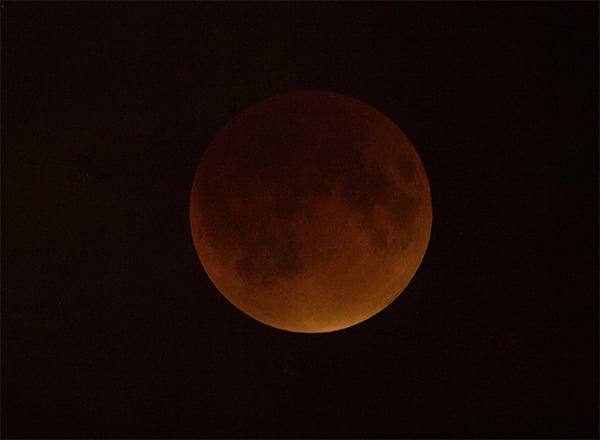
The blood moon over Manatee County, Florida.
Photo: Victor Rogus.
Last night was quite the night for stargazers, many of whom watched, camera in hand, as the moon turned a striking, dusky red during a rare lunar eclipse.
The so-called blood moon was all the more rare in that it was also supermoon, when the moon is full as it reaches the closest part of its ovular orbit around the Earth, called the perigee. Supermoons appear larger and brighter, and can make for especially striking photographs.
The blood moon over the Washington Monument in Washington, DC.
Photo: NASA/Aubrey Gemignani.
Europe was treated to a rare solar eclipse/supermoon combo in March, during the spring equinox, and the resulting photographs were stunning. Last night’s super blood moon was the first since 1982, and won’t take place again until 2033.
The blood moon phenomenon occurs when the moon passes directly behind the Earth’s shadow. The unique crimson color is caused by light refracting through the Earth’s atmosphere.
The trick to capturing the supermoon in all its glory? Get away from city lights, and avoid long exposures, which will cause blurring, because both the Earth and the moon are moving, USA Today advises. Use a tripod, a fairly slow shutter speed, and a high aperture.
The results, as you can see, can be quite stunning. But beware: as many smartphone users discovered last night, the iPhone camera probably won’t cut it.
The blood moon over Washington, DC.
Photo: NASA/Aubrey Gemignani.
The blood supermoon over the Pacific Ocean.
Photo: Pajaro Dunes Resort, Watsonville, California.
While photographers aimed their cameras, at least one artist was also taking inspiration from the rare astronomical event. Kour Pour, known for his textile-based paintings, recently posted an eclipse-themed tapestry on Instagram in response to the super blood moon’s popularity on social media.